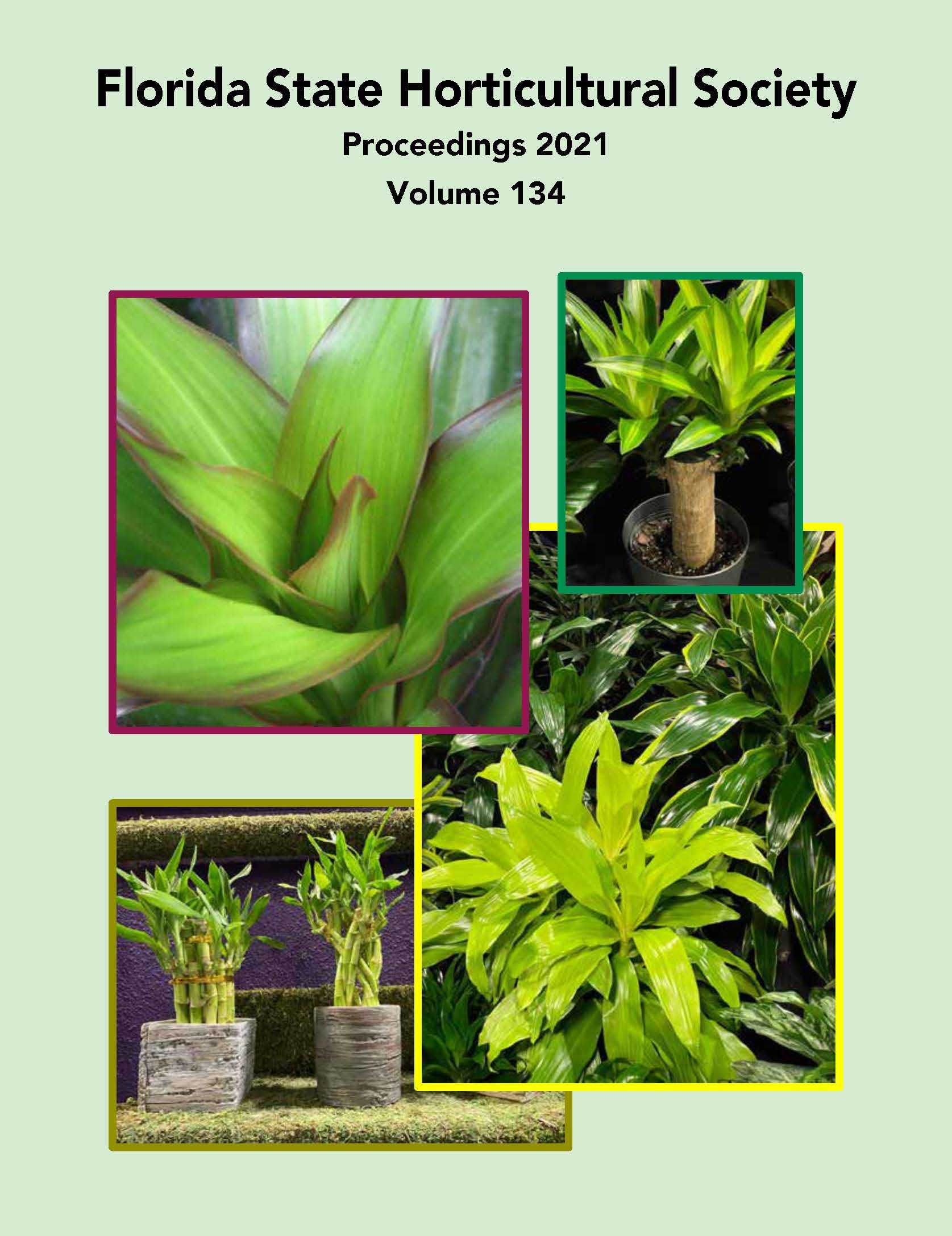Abstract
Liners of muhly grass (Muhlenbergia capillaris) were planted 15 February 2018 in 2.4-L containers in a pine bark-based substrate amended with four controlled-release fertilizer treatments: (T1) 0 kg·m-3, (T2) 2.8 kg·m-3 and (T3) 5.5 kg·m-3 of 18N–2.6P–10K (Osmocote® 18–6–12, 8–9 months longevity at 21°C), and (T4) 4.7 kg·m-3 of 21N–1.7P–6.6K (Osmocote® 21–4–8, 12–14 months longevity at 21°C). Plants were grown on polypropylene ground cover under overhead sprinkler irrigation at Hibernia Nursery in Webster, FL to evaluate the impact of fertilizer rate and longevity on the plant growth response. After six months, changes in plant heights (final–initial) for T2, T3, and T4 were similar. Substrate NO3-N, P, and K decreased dramatically during the evaluation for all treatments and ranged from 19–0.2, 1.5–0.6, and 71–0.5 mg·L-1, respectively, for T2. These data indicate that muhly grass has a low nutrient requirement, likely needing less fertilizer than applied with T2. The minimal amount of fertilizer to apply to muhly grass without sacrificing growth deserves further investigation.

